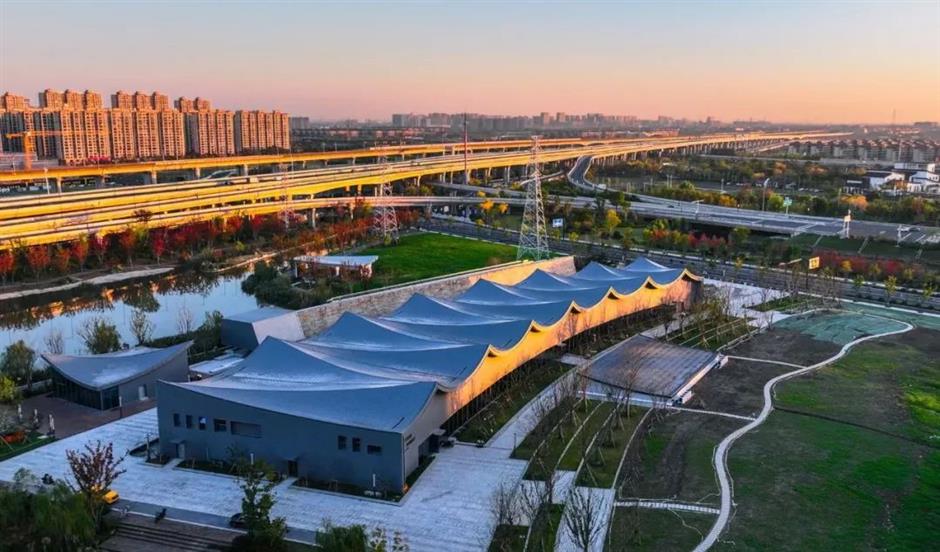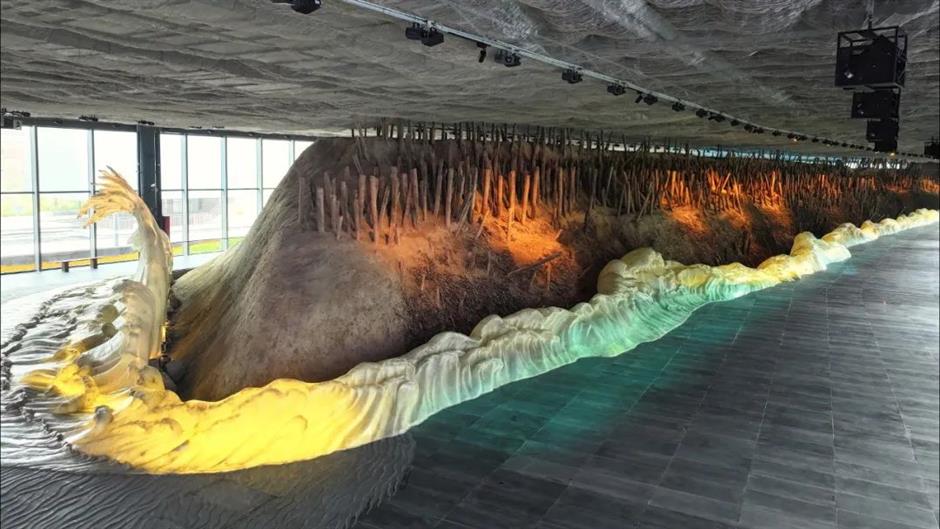Discover the History of Seawalls at the Newly Opened Cultural Park
The Linping Ancient Seawall Cultural Park welcomed visitors on December 5. The park in Hangzhou's Linping District combines a museum and a public outdoor recreation area. Visitors can explore the archeological excavation and preservation, as well as the history of seawalls.
The park stretches from the Shanghai-Hangzhou Railway in the north to Mushu Street in the south, linking Donghu Road in the east to Yingbin Road in the west. Currently, the 4,500-square-meter venue and outdoor exhibition space collectively showcase the history and seawalls established across various eras.
The Qiantang River boasts the largest tidal bore in the world. As the tide surges into the river mouth from Hangzhou Bay, waves can reach heights of up to 9 meters. The strong waves were a problem for people in ancient times. Throughout dynasties, the people in Hangzhou struggled with the roaring waves and eventually built their own "great wall" between the water and the city.
Now, the local government departments and archeological organizations have relocated the unearthed antiquities and relics to the new park, which chronicles the construction of seawalls according to different construction skills and dynasties.

The Linping Ancient Seawall Cultural Park showcases undulating roofs that mirror the dynamic waves. The venue is designed with undulating roofs to echo the roaring waves. Some seawalls have been reconstructed to reflect their original layers, showcasing our ancestors' wisdom and determination in overcoming the raging tides.
In 2013, when the local government was building a sports center, segments of ancient seawalls were unearthed after being buried for centuries. The Hangzhou Archeology Institute spent years excavating and researching the ancient seawalls and confirmed the sections belonging to the Ming (1368-1644) and Qing (1644-1911) dynasties.
Since then, the institute has been digging seawall segments citywide, discovering constructions in the Wuyue Kingdom during the Five Dynasties and Ten Kingdoms (AD 907-979) and the Song Dynasty (960-1279). To protect the city from flooding, ancient people built barriers along the riverbank. Initially, the peculiar soil texture of the riverbed led to the construction of seawalls on mudflats.
The earliest record of seawalls could date to the Eastern Han Dynasty (AD 25-220). However, the mud-made project couldn't withstand the tides for long. This fragile structure survives today only in historical documents.

An uncovered section of the seawall is on display in the park, enhanced by immersive digital installations that bring the historical structure to life.
In 2014, the institute spent six months excavating a seawall measuring 34 meters in length on present-day Jiangcheng Road. Emperor Qianliu, the first king of the Wuyue Kingdom, is believed to have built the seawall, making it the oldest seawall ever excavated in China.
After a long time of excavation and research, professionals found that the Wuyue people had made a breakthrough in building the hydraulic infrastructure. They innovated a construction method involving huge cages, woven with bamboo strips and stuffed with stones. They pile these cages layer by layer, then add grass and wood to the top for added strength. The revolutionary seawalls paid off, as Hangzhou quickly became a prosperous hub of trade.
The Song Dynasty was once thought to be the first to use this cage method. However, the discoveries have shown that it was actually used about a century earlier. Over succeeding eras, Hangzhou expanded eastward as sediment from the Qiantang River gradually formed new land to the east. Eventually, the Wuyue Kingdom abandoned its seawalls and built new ones.
At that time, as the economic and political focus gradually shifted from northern to southern China, constructing seawalls became a national project of the royal court. New building methods and structures were continually developed, making the seawalls more solid and durable.
The new park has immersive digital installations to help visitors understand how seawalls have altered over time. The venue showcases an uncovered section of the seawall, complete with a replicated natural setting and waves. Timbers and bamboo have withered or broken after being buried and then exposed to air, but they demonstrate the builders' determination to soothe the thundering waves.
Source: City News Service Editor: Fu Rong